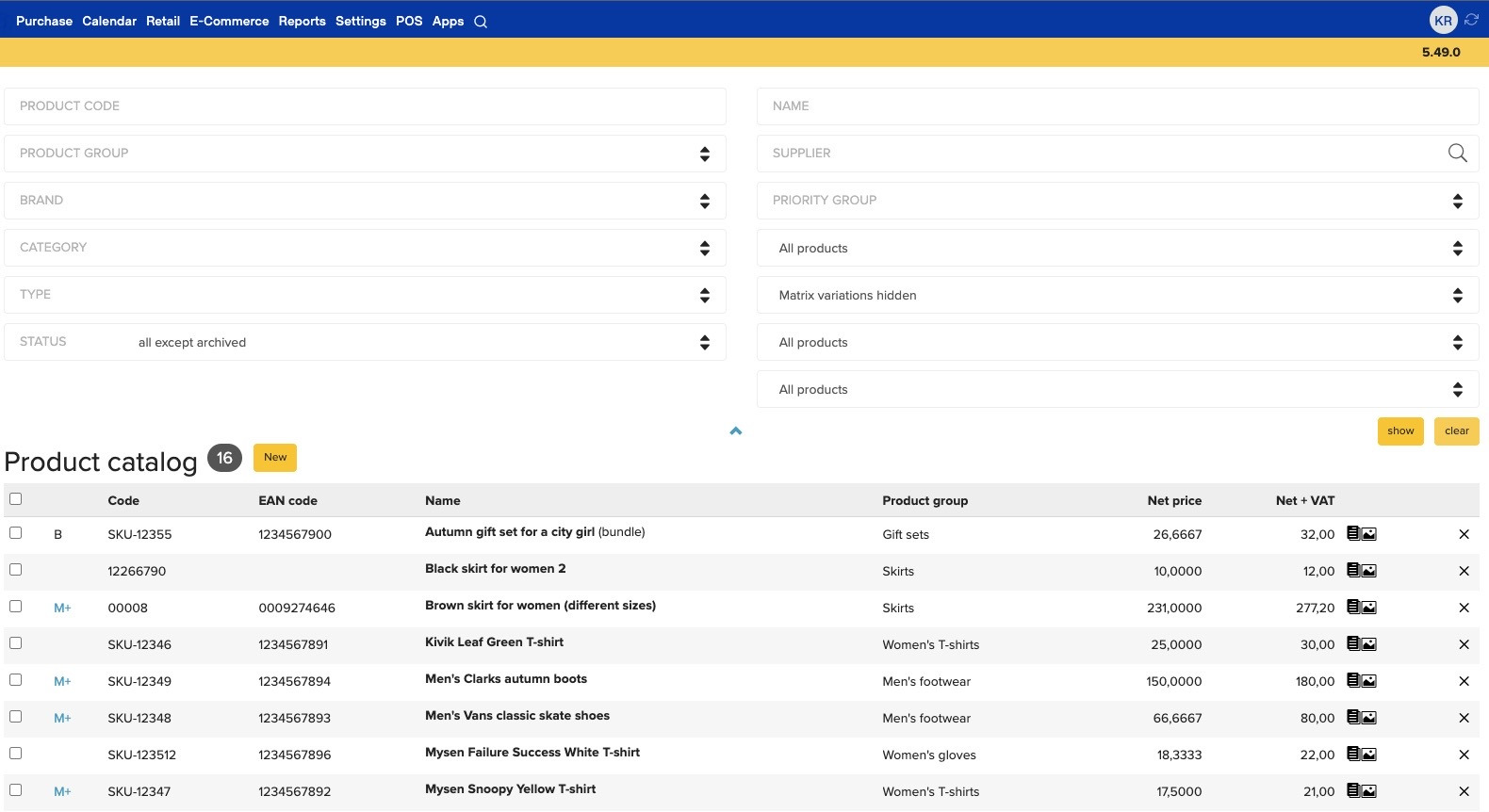New features
“Store Regions” module
- This feature allows to group stores into “regions”, and set up price lists that apply to an entire group of stores.
- Please contact customer support to enable it on your account.
- Store Regions can be managed in Retail Chain → Store regions. On location form, you can specify which region the store belongs to. Locations can also be filtered by region.
- A region can be associated with an unlimited number of price lists, and you can change the order in which the price lists will apply. These price lists will apply to all stores in the region.
- It is also possible to define store region and customer group-specific price lists: price lists that apply only in the specified region, and to customers belonging to the specified group.
- Price lists will be applied in the following order (and each successive price list overrides a previous one if they contain the same products):
- Region price lists;
- Region and customer group-specific price lists;
- Location price lists.
- A region cannot be deleted if there is at least one store that belongs to that region.
- On User form and Employee form, the lists of locations additionally show region name for each location. Similarly, the “Locations and tax rates” block on Product Group form, too, has been augmented with region names.
- For region-related API calls, see the release notes for API version 1.13.0, or the documentation of API call “getStoreRegions”. This page contains links to all other related API calls.
Other new features
- On a sales document, rows can now be dragged to adjust their order.
- Sales documents now properly support different currencies.
- Item prices in product search are displayed in the selected currency;
- Changing the currency will recalculate item prices on the document;
- Cost and markup are shown and calculated correctly regardless of selected currency.
- ERPLY now supports creating invoices with Reverse VAT (VAT that needs to be paid by the buyer).
- Reverse VAT needs to be defined as a separate tax rate in the Settings → Set up tax rates module.
- On sales document printout, Reverse VAT is reported in a separate block.
- The description text which appears next to the Reverse VAT amount on the printout (instructions to the buyer) can be customized in Settings → Configuration.
- In Estonia, an invoice is not allowed to contain mixed regular and reverse VAT, or different reverse VAT rates. Items with regular VAT and reverse VAT need to be put on separate invoices.
- Back office will no longer allow direct access from POS if you have originally logged into POS with a PIN, and will prompt for your user name and password. This restriction has been implemented to improve back office’s security.
- New module Inventory → “Pick items to create an order” has been added. It is a convenient way to browse the product catalog and pick items to a “shopping cart”, which can then be turned into a sales order or a purchase order. It can be useful when taking phone orders — or for doing inventory restocking. For each product, ERPLY can show current quantities in various stores, period sales and purchases, amount already on order (or being transferred from other stores), and list price for a specific customer.
- Excel / CSV output option has been added for the following reports:
- “Payments Summary (Cash Audit)” and “Payments by date”;
- Reports → Commission and timeclock → Time and Attendance Report.
- Configuration parameters
"password_only_alphanumeric_allowed"and"password_alphanumeric_required"have been added. With these parameters, it is possible to restrict what kinds of passwords users can pick. (The first parameter will disallow any characters besides letters and numbers; the second requires a password to contain at least one small letter, one capital letter and one digit.)
Improvements
- If user opens a long-running report, it should no longer lock up the whole back office for them. While a report is being prepared, it is now possible to continue browsing around in other modules.
- French and Canadian French translations have been updated.
- The “Supplier” field on forms has been changed from a drop-down to a text field with integrated search, to better support accounts with a very large number of suppliers.
- Both “location in warehouse” fields on product card (the drop-down, and the text field) can now be exported and imported with product export and product import modules.
- Nordea Bank has been renamed to Luminor.
- Fields “netPrice” and “originalNetPrice” on Actual Reports product labels now have the same precision as the “Net Price” field on product card.
- On new South African accounts, Invoice-Waybills will be called “Tax Invoice-Waybills”. (Receipts have been renamed to “Receipt / Tax Invoice” and credit invoices to “Credit Tax Invoice”.)
- Old Web POS (the point-of-sale application with light grey interface and grey buttons) is unused and has been removed.
- Web POS (the point-of-sale application with grey interface and colored buttons) has been deprecated; the application now reports that it is outdated and will be removed soon. We recommend to migrate to Berlin POS.
- For Javascript plugins, global variable
"country"has been added (containing the two-letter code of account’s country).
Fixes
- Fixed: a product’s “reserved quantity” did not include quantities reserved with Inventory Transfer Orders.
- Fixed: “Previous” & “Next” buttons on product card did not work.
- Fixed: Reports “Sales by product group, with drill down” and “Sales by category, with drill down” were sometimes splitting a single product group or product category into multiple lines.
- Fixed: The red dot on purchase document rows (which indicates a changed price) now takes less space and no longer covers the price field.
- When replacing a product on a sales document, the “Keep window open” check box in the product search dialog is now disabled. Keeping the window open and selecting multiple products is possible only when adding new items to the end of the sales document (not when replacing an existing item in the middle of the document).
- Security fixes.










